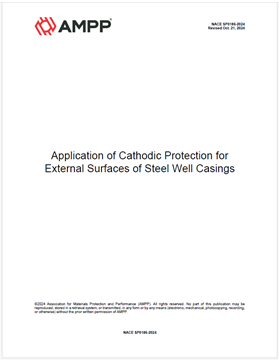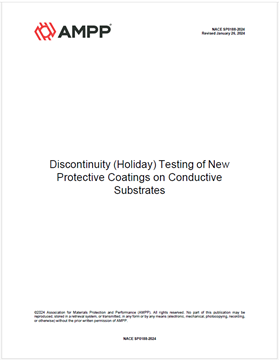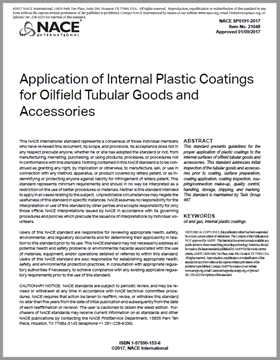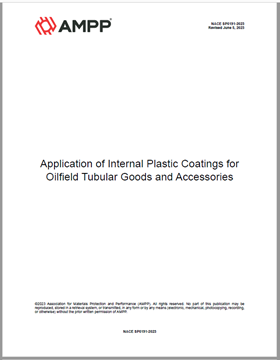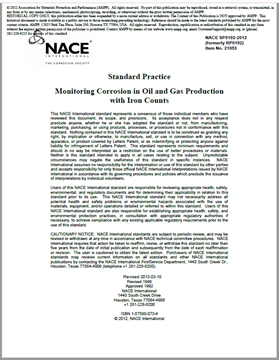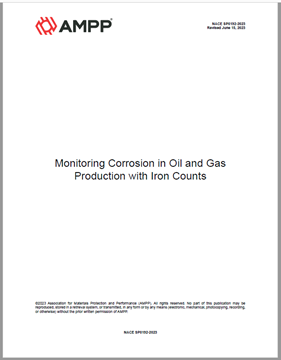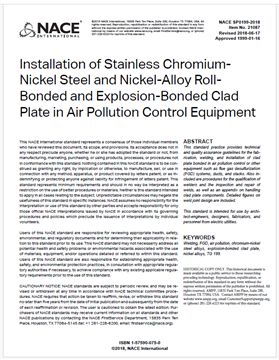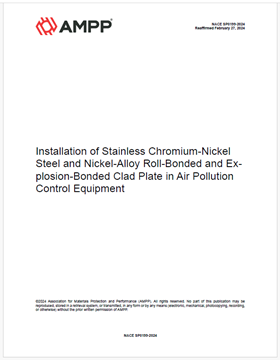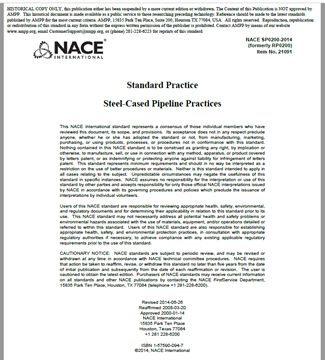Search
NACE Standards
View as
Sort by
Display
per page
NACE SP0186-2024, Application of Cathodic Protection for External Surfaces of Steel Well Casings
Product Number:
NACE SP0186-2024
Publication Date:
2024
$109.00
NACE SP0188-2006 (formerly RP0188), Discontinuity (Holiday) Testing of New Protective Coatings on Conductive Substrates
Product Number:
21038-SG
Publication Date:
2006
$179.00
NACE SP0188-2024, Discontinuity (Holiday) Testing of New Protective Coatings on Conductive Substrates
Product Number:
NACE SP0188-2024
Publication Date:
2024
$109.00
NACE SP0191-2017 (formerly RP0191), "Application of Internal Plastic Coatings for Oilfield Tubular Goods and Accessories"
Product Number:
21048-SG
Publication Date:
2017
$179.00
NACE SP0191-2023, Application of Internal Plastic Coatings for Oilfield Tubular Goods and Accessories
Product Number:
NACE SP0191-2023
Publication Date:
2023
$109.00
NACE SP0192-2012 Monitoring Corrosion in Oil and Gas Production with Iron Counts
Product Number:
21053-SG
Publication Date:
2012
$179.00
NACE SP0192-2023, Monitoring Corrosion in Oil and Gas Production with Iron Counts
Product Number:
NACE SP0192-2023
Publication Date:
2023
$109.00
NACE SP0199-2018, Installation of Stainless Chromium-Nickel Steel and Nickel-Alloy Roll-Bonded and Explosion-Bonded Clad Plate in Air Pollution Control Equipment
Product Number:
21087-SG
Publication Date:
2018
$179.00
NACE SP0199-2024, Installation of Stainless Chromium-Nickel Steel and Nickel-Alloy Roll-Bonded and Explosion-Bonded Clad Plate in Air Pollution Control Equipment
Product Number:
NACE SP0199-2024
$109.00
NACE SP0200-2023, Steel-Cased Pipeline Practices
Product Number:
NACE SP0200-2023
Publication Date:
2023
$109.00
NACE SP0204-2008, Stress Corrosion Cracking (SCC) Direct Assessment Methodology
Product Number:
NACE SP0204-2008
Publication Date:
2008
$179.00


